I pulled off the B3 near Ihringen and pointed the Santa Fe toward the edge of the Kaiserstuhl, where vineyards ripple like silk through volcanic hills. The morning haze clung low, the kind that makes the road glisten and every surface reflect more sharply. I wasn’t here to conquer trails or descend muddy ravines, that’s not what this car is about. The new Hyundai Santa Fe 1.6 T, GDI HEV isn’t pretending to be an off, roader anymore, no matter what its new angular retro looks suggest. This, very clearly, is a family car. A cleverly disguised MPV dressed in SUV chic, ready to haul groceries, kids, bikes, and holiday hopes.
But don’t be fooled by the boxy silhouette or the Isuzu, Trooper nostalgia. This fifth, generation Santa Fe is new from the bolts up. What we’re driving today is the full, hybrid, front, wheel drive variant, no plugs, no diesels, and definitely no wild ambitions. Just quiet, refined functionality.
Size Does Matter: The Santa Fe’s Growth Spurt
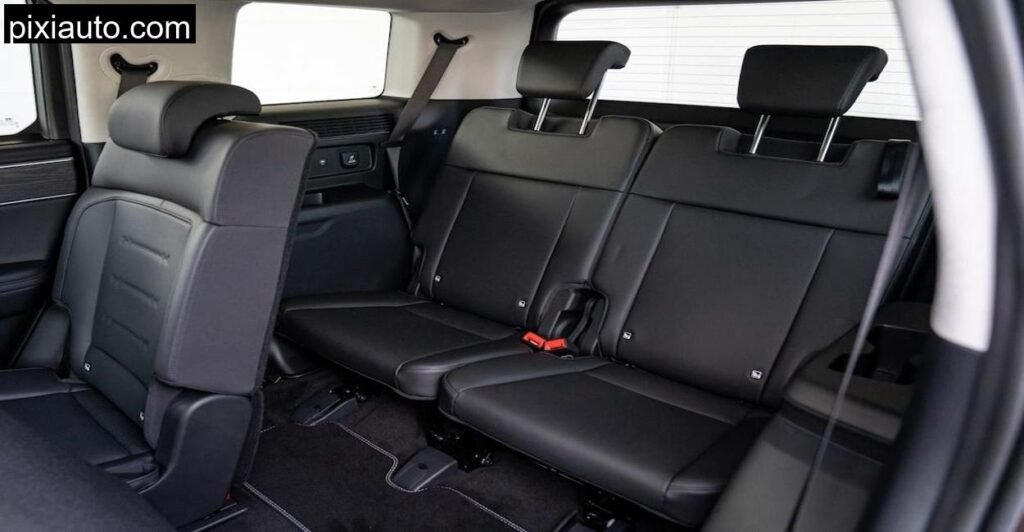
You don’t notice how big this Santa Fe has become until you park it next to something mid, size, like a Tiguan or a Peugeot 5008. At 4.83 meters long and nearly 1.91 meters wide, it’s creeping into American territory, quite literally, Hyundai’s Alabama plant builds them for the US. The longer wheelbase of 2815 mm translates directly into sprawling legroom, particularly in row two. The third row is still for kids or yoga masters, but it’s reachable without pulling a muscle. The tailgate opens to reveal a cavernous 628 liters, or up to 1949 liters if you flatten everything behind the front seats. It’s clear who this car is for: families who don’t pack light.
In the Kaiserstuhl, where narrow vineyard roads force precision, I immediately felt the size. At 12 meters, the turning circle isn’t small. Maneuvering around tight curves and vineyard terraces was a two, point, sometimes three, point process. But the Santa Fe never felt clumsy. The steering is light, borderline American in feel, and the cameras and sensors make parking feel like a video game. This is Hyundai’s idea of a minivan, and they’ve shaped it like a Tonka toy to make it more palatable.
Hybrid in Harmony: The Powertrain Experience
Under the hood is a 1.6, liter turbocharged four, cylinder engine with direct injection, combined with a 65 hp electric motor. Together they deliver 215 hp and 367 Nm of torque, directed solely to the front wheels via a 6, speed automatic. It’s not a drivetrain that begs to be pushed, but that’s not its purpose.
From a cold start in Oberrotweil, the Santa Fe hummed silently under electric propulsion, gliding through village corners at low speed. Push a little more, and the petrol engine engages seamlessly. I was genuinely impressed at how refined the transition was. There’s no CVT drone, no whiny revs. The 6, speed transmission gives you real gears, which brings an organic, normal, car feel to the hybrid system. No paddle shifters here, again, this isn’t pretending to be sporty.
On the narrow Bötzingen, Lenzenberg climb, throttle response was progressive and well, measured. Even in Sport mode, where the steering gains a little heft and the throttle becomes more eager, the Santa Fe remains composed rather than thrilling. It’s quick enough for daily driving, with a 0, 100 km/h time of 8.3 seconds, but it feels more tuned for comfort than excitement.
Suspension and Ride Comfort in the Hills
Kaiserstuhl roads are deceptive: they appear smooth, but the volcanic foundation creates a rolling, undulating ride surface. On Kumho Ecsta PS71 255/45 R20 rubber, the Santa Fe absorbed it all with the calm composure of a lounge chair. The suspension is tuned softer than the Kia Sorento’s, which shares its underpinnings, and that makes it brilliant for long, distance touring. It’s never floaty or vague, though. Even when cresting a steep switchback or rolling down to Vogtsburg, body control remained solid.
It does grumble a little over cobblestones, especially around Achkarren village, but the cabin remains impressively hushed. Noise insulation is top, tier, with acoustic glass in the front and very little wind or road noise up to 130 km/h. Above that, the mirrors start to whistle a bit, and beyond 150 km/h on the Autobahn, you feel like you’ve hit the ceiling, quite literally. It’s limited to 180 km/h, which makes sense. This isn’t a fast, lane chaser; it’s a family wagon.
Interior Life: Family, First, Thoughtful Design
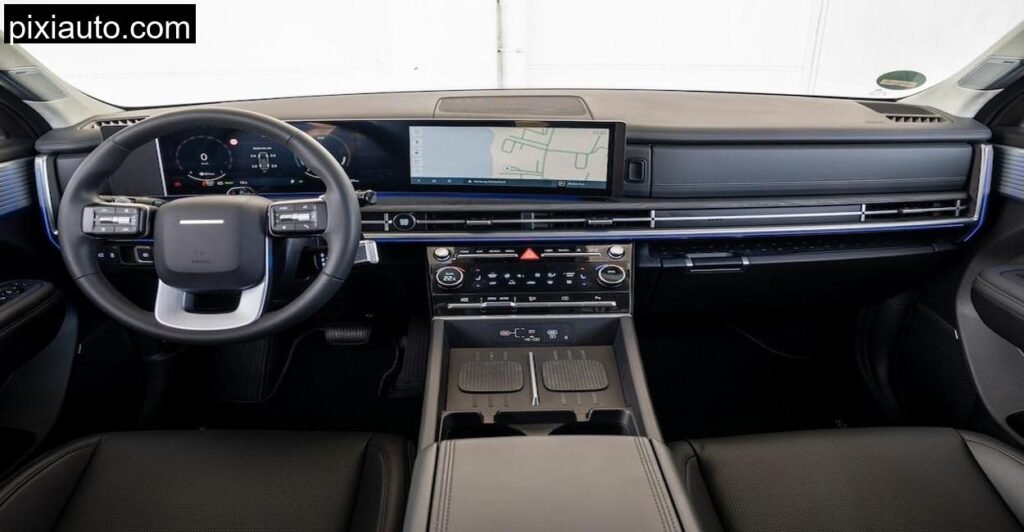
What struck me most was the seat ergonomics. You sit high but not perched. With a 72.5 cm seat height from the ground, getting in and out is easy even for the elderly, or tired parents. Row two has sliding and reclining functions, a huge plus on long drives. The materials feel premium without trying too hard, and there are plenty of buttons. Yes, real buttons. Hyundai didn’t go full Tesla here, and thank God for that.
The infotainment system is centered on a 12.3, inch screen, responsive and mostly logical. I did find the rotary knob to control map zoom to be annoyingly far away, and the voice control still needs work. It handled climate and seat heating fine, but it struggled to find a couple of radio stations I asked for.
Rear seat passengers get USB, C ports, independent air vents, and heating, a detail some premium rivals still forget. And with the Signature trim, our test car came fitted with a 12, speaker Bose audio system, 360, degree cameras, and blind, spot monitoring. There’s no head, up display in our tester, but it’s an option.
Performance, Practicality, and the Family Test
On paper, 215 horsepower sounds decent, but in practice, the Santa Fe is about momentum, not urgency. Acceleration to 130 km/h takes 13.3 seconds, and above that, progress slows. But here’s the thing: no family car needs to be fast. It needs to be predictable, easy to drive, and confidence, inspiring, and this Hyundai is exactly that. The brakes are strong and consistent, with a cold stop from 100 km/h requiring just 36.2 meters.
During our loop through the Kaiserstuhl, covering a mix of town, countryside, and Autobahn, the car returned an average of 7.3 liters per 100 kilometers, above the WLTP rating of 6.6, but acceptable considering the load and terrain. With a 67, liter tank, you’re looking at nearly 900 km of range between fill, ups.
And though this hybrid system can’t drive long distances in electric mode, it does enough at low speeds to cut fuel use significantly in town. That’s the real magic, it makes no fuss, no drama. Just smooth, efficient driving.
Technical Specifications
Technical specs are sourced instantly and exclusively from Hyundai’s official web platform for maximum accuracy.
| Specification | Hyundai Santa Fe 1.6 T, GDI HEV FWD |
| Engine | 1.6L Turbocharged I4 Hybrid |
| Electric Motor Output | 65 hp |
| System Output | 215 hp (158 kW) |
| System Torque | 367 Nm |
| Transmission | 6, speed Automatic |
| Drivetrain | Front, Wheel Drive |
| 0, 100 km/h | 8.3 seconds |
| Top Speed | 180 km/h |
| Test Consumption (Avg) | 7.3 l/100 km |
| WLTP Consumption | 6.6 l/100 km |
| CO₂ Emissions (WLTP) | 156 g/km |
| Tank Capacity | 67 liters |
| Length/Width/Height | 4830 / 1900 / 1770 mm |
| Wheelbase | 2815 mm |
| Turning Circle | 12.0 meters |
| Boot Capacity | 628 , 1949 liters |
| Braking Distance (100, 0 km/h) | 36.2 m (cold), 36.6 m (warm) |
| Curb Weight | 1966 kg |
| Payload | 674 kg |
| Towing Capacity (Braked) | 1110 kg |
| Price (Base) | €56,700 |
| Price (Test Vehicle) | €60,750 |
Conclusion: A Family Fortress in SUV Form
The Santa Fe doesn’t need to go off, road. It doesn’t need to hit 200 km/h. It needs to carry families, gear, groceries, and occasionally a weekend trailer. And it does all of that without complaint. It looks rugged but behaves civilized. It’s easy to drive, quiet on the highway, and packed with thoughtful touches that make life easier, not just flashier.
In Kaiserstuhl’s narrow lanes and vineyard drives, it felt a touch wide, but always manageable. It may not stir your soul, but it absolutely caters to your life. If you’re in the market for a large, comfortable, and reliable family transporter, the Hyundai Santa Fe 1.6 T, GDI HEV deserves a serious look.
Is the Hyundai Santa Fe a proper SUV?
No, it’s styled like one, but it’s more of a family crossover. With just 17.5 cm of ground clearance and no low, range gearing, it’s not meant for serious off, roading.
How does Hyundai Santa Fe perform with a full load?
Even with five adults and luggage, the Santa Fe remains composed. Acceleration dips slightly, but handling and braking stay reassuringly stable.
Is the Hyundai Santa Fe hybrid efficient enough?
Yes, for everyday use. It won’t drive long distances purely on electricity, but city driving is often electric, assisted. Our test averaged 7.3 l/100 km.

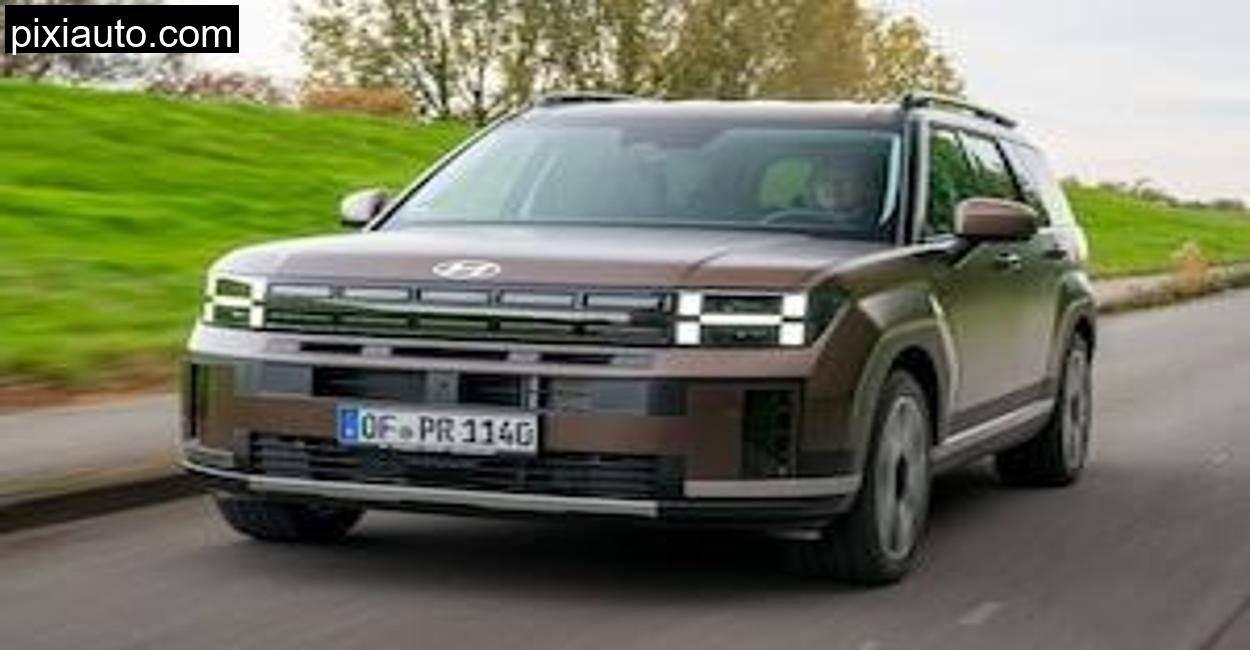
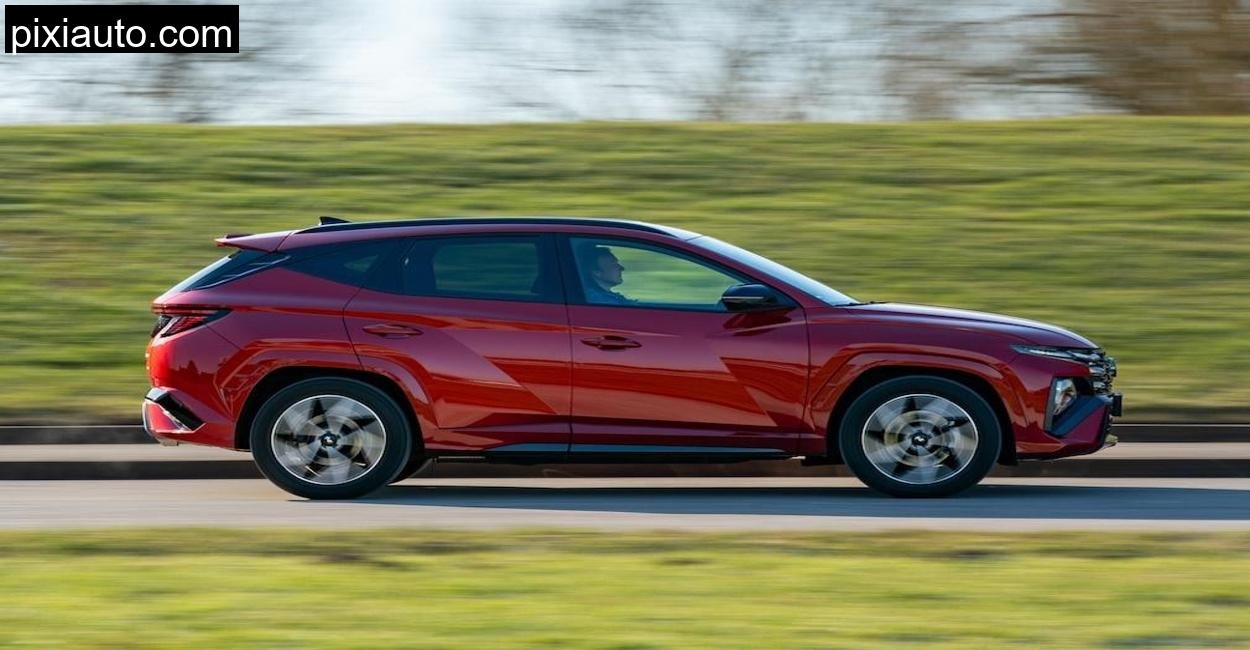
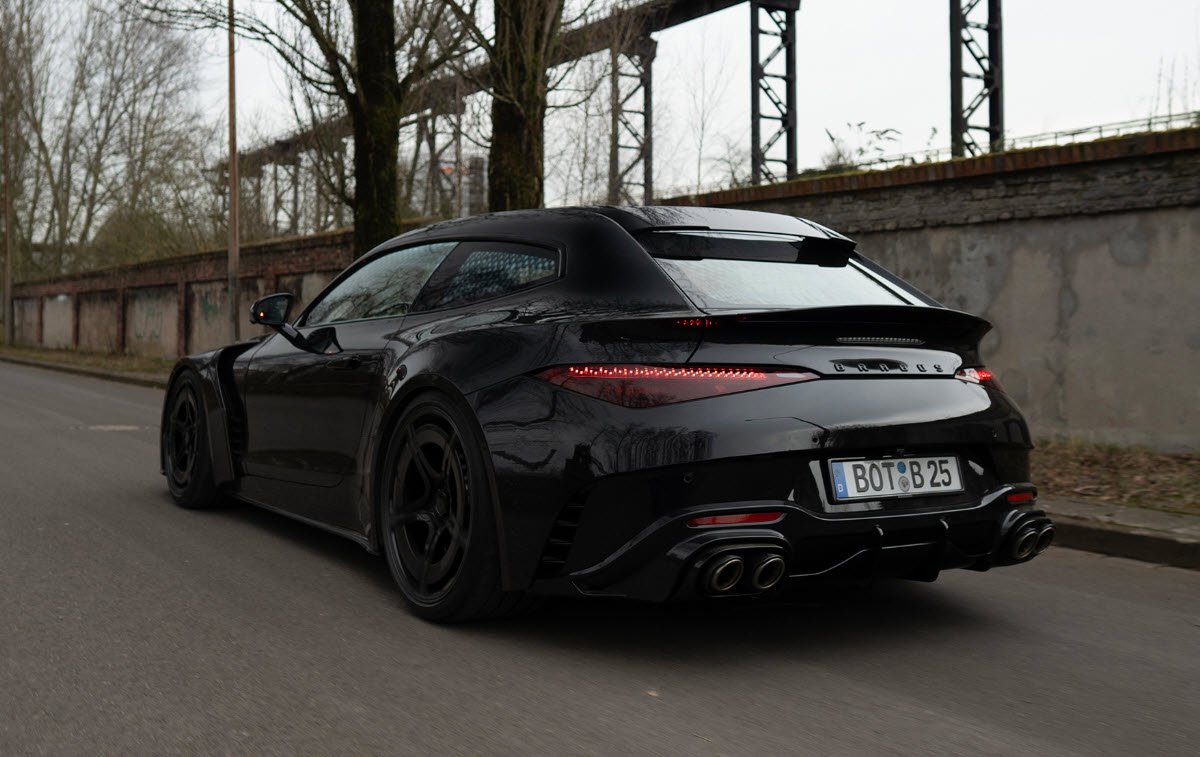
Leave a Comment